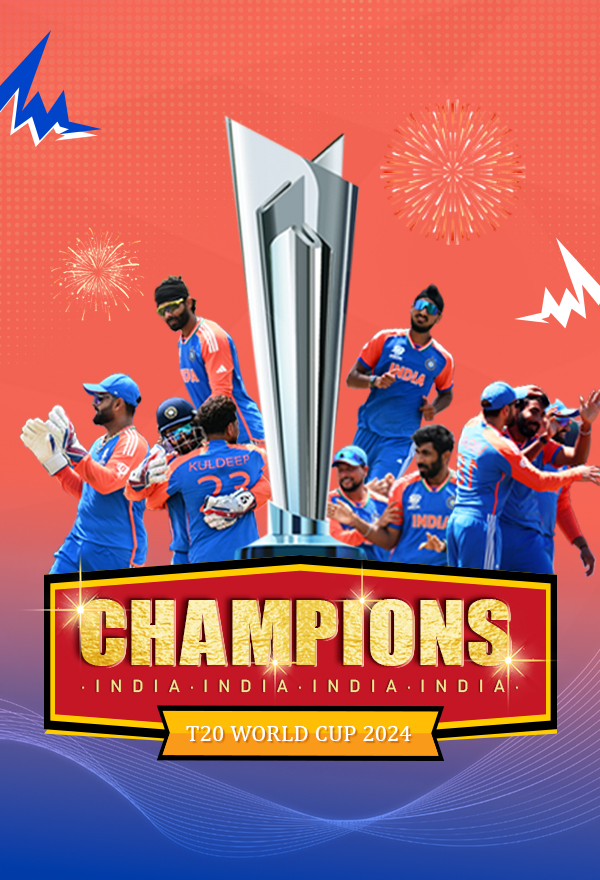
Samira Vishwas
Tezzbuzz|11-07-2025
Jofra Archer and Jasprit Bumrah — two exceptionally talented bowlers, but fighting their fate with injuries. Both of them stage a comeback for the Lord’s Test. However, can both of them sustain the workload?
Also read: Virat Kohli reveals reason for Test retirement
The Federal speaks to Atharva Dewannavar, a strength and conditioning coach from Kolhapur, Maharashtra, who breaks down whether Bumrah and Archer can last the entire Lord’s Test, what goes on behind the scenes, and the role of technology in conserving the fast bowlers.
How difficult is it to manage elite players like Bumrah and Archer, given their injury histories?
Workload management is a real concept, but there’s often a clash between skill coaches and sports science staff. Coaches want their best players fit all year round, while the sports science team focuses on sustainability and long-term health. The key lies in communication — letting data and testing guide the decisions. When a player returns to nets or practice matches, you look at whether they’re reaching their old speeds, their accuracy, and overall performance metrics.
These indicators help determine whether they’re truly match-ready.If you were their strength and conditioning coach, how would you balance performance and injury prevention?
Sports science has evolved to a point where we get live data from the dressing room about player stress levels. But match scenarios often dictate usage — if the game is on the line, the captain will turn to his strike bowler. That’s true whether it’s Bumrah for India or Archer for England. Athletes themselves are wired to push that extra mile during high-stakes games, even if it risks aggravating an old injury.
England won the toss and opted to bat at Lord’s. Could that be an effort to protect Archer from immediate exposure, given his return to Tests after nearly four years?
Possibly, but I think the conditions played a bigger role. Lord’s today looks like a batting-friendly pitch with overhead support. The slope here is unique, and a one-day rest wouldn’t change much for a player who hasn’t bowled in red-ball cricket for four years. It’s more about reading the conditions than shielding a player.
Do top-tier bowlers like Bumrah and Archer need more customised training regimens than others like Siraj or Woakes?
Absolutely. Someone like Bumrah, who has a highly unconventional bowling action, undergoes significant joint stress. The National Cricket Academy’s (NCA) Centre of Excellence (CoE) in Bangalore runs standard tests to assess current condition, and from there, a highly personalised plan is created. That includes strength training, rotational and power exercises, surface-specific training, and even managing the number of deliveries bowled. Coordination between the team staff and the center is constant, especially between Tests, to ensure such players remain match-fit.
Can you walk us through a typical rehab or recovery protocol for an elite fast bowler?
Recovery starts with basics — quality sleep and proper nutrition, both of which are monitored rigorously. Then come recovery modalities like massage, swimming, and physiotherapy. When it comes to rehab, especially for someone prone to back injuries like Bumrah, it’s about building the core, strengthening the lower and upper body, and syncing everything with the physio team. This continues even during match windows.
Is injury risk for fast bowlers mostly about workload — overs bowled, training intensity, etc., or is there more to it?
It’s a combination of multiple factors — physical, mental, and logistical. Yes, they have great support systems, from travel arrangements to psychologists and world-class medical teams. But if you look at numbers, since his injury in 2023, Bumrah has bowled over 437 overs in Tests alone. Add ODIs and IPL, and that number goes up to over 4,200 deliveries in just 22 months. Now consider the physics: every delivery he bowls at 140+ km/h puts five to nine times his body weight on his front foot. For an 80 kg athlete, that’s 400–700 kg of force on joints every single time. That’s where high-level strength training and monitoring come in.
What exactly is “risk management” in a cricketing context?
Risk management is about identifying high-stakes matches — World Cups, major Test series, especially against top-tier teams like Australia, England, or South Africa. Those are the games where your best players must be fit. For other series, like against Bangladesh or Sri Lanka, teams can afford to give younger players a chance. It’s also about mapping out a player’s schedule in a way that balances performance with longevity.
Why do athletes like Cristiano Ronaldo remain injury-free deep into their 30s while someone like Bumrah needs constant monitoring even in his early 30s?
There are multiple reasons. Genetics, of course. But also, the sports are fundamentally different. The load on a fast bowler is unique. Plus, in countries like Portugal, there’s a culture of long-term athletic development — kids are encouraged to play multiple sports early on. This builds all-round athleticism. In India, we tend to hyper-specialise — if you play cricket, that’s all you do. That limits the body’s exposure to varied movements and increases injury risk over time.
So, in conclusion, managing Bumrah and Archer comes down to individualised plans?
Exactly. They are two unique athletes with different injury histories, biomechanics, and needs. You can’t apply a one-size-fits-all plan. Risk management and strength conditioning must be tailored, constantly monitored, and adjusted based on real-time data.
(The content above has been generated using a fine-tuned AI model. To ensure accuracy, quality, and editorial integrity, we employ a Human-In-The-Loop (HITL) process. While AI assists in creating the initial draft, our experienced editorial team carefully reviews, edits, and refines the content before publication. At The Federal, we combine the efficiency of AI with the expertise of human editors to deliver reliable and insightful journalism.)

India Women Vs England Women Highlights, 4th T20I: IND Take 3-1 Lead

Jofra Archer returns after 4 years, no Atkinson as England announce Lord's Playing XI

Tougher batting test awaits India in 3rd Test at Lord’s

Jofra Archer returns as England name playing XI for Lord’s







